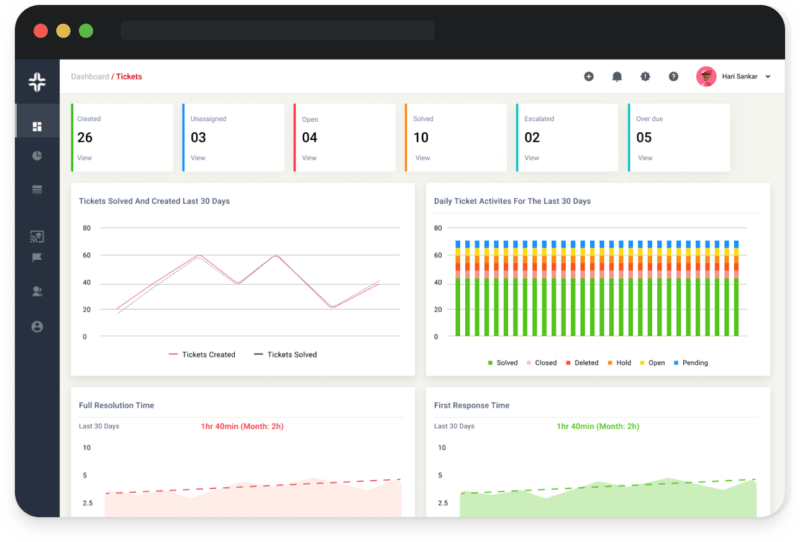Home » PSApedia
Incident-to-Problem Ratio
Understanding Incident-to-Problem Ratio. Learn how this critical metric impacts your service quality.

What Is Incident-to-Problem Ratio?
The Incident-to-Problem Ratio measures the number of incidents compared to the number of problems found in a certain time. In Professional Service Automation (PSA), it’s important to monitor and manage this ratio for the best service and customer satisfaction.
With ticket management, it’s possible to efficiently track incidents and problems, leading to better insights and action plans.
Why Is Incident-to-Problem Ratio Important?
Understanding the ratio between incidents and problems provides valuable insights into the health and efficiency of a service environment. A high incident-to-problem ratio might indicate:
- They haven’t addressed the root cause of recurring issues.
- A need for better resource management or training.
- Potential areas for process improvements or tool enhancements.
On the other hand, a lower ratio suggests effective problem management and possibly a proactive approach to identifying and resolving root causes before they escalate.

Why Is Incident-to-Problem Ratio Important?
Calculating Incident-to-Problem Ratio
To calculate the Incident-to-Problem Ratio, use the following formula:
Incident-to-Problem Ratio = Total Number of Incidents / Total Number of Problems
Example: If a PSA tool like KEBS logged 100 incidents and 10 problems in a month, the ratio would be:
Incident-to-Problem Ratio = 100 / 10 = 10
This means for every problem identified, there were 10 incidents.
Distinction Between Incident-to-Problem Ratio vs Other Ratios
Problems, on the other hand, are the underlying causes of one or more incidents. Identifying and resolving problems means diving deeper to find root causes, often requiring a more comprehensive solution, such as those offered by deal management software or resource management tools.
| Metric | Definition | Purpose | Example or Typical Usage |
|---|---|---|---|
| Incident-to-Problem Ratio | Number of incidents per identified problem. | To measure the efficiency of problem management by analyzing the frequency of recurring incidents before they are recognized as problems. | If there are 50 incidents related to a single problem, the ratio is 50:1. |
| Change-to-Incident Ratio | Number of changes made per incident caused by those changes. | To gauge the effectiveness and safety of the change management process. Lower ratios indicate better change management, as fewer incidents are caused. | If 1 out of every 10 changes causes an incident, the ratio is 10:1. |
| Incident-to-Resolution Time Ratio | Number of incidents per average resolution time. | To assess how quickly the service desk or IT team resolves issues. Lower resolution times with higher incidents indicate efficiency. | If there are 100 incidents with an average resolution time of 2 hours, the ratio might be expressed as 100:2. |
| SLA Breach-to-Incident Ratio | Number of SLA breaches per total number of incidents. | To determine the efficiency and effectiveness of service delivery. Fewer breaches indicate better service delivery in terms of meeting targets. | If 5 out of 100 incidents breach the SLA, the ratio is 20:1. |
How do we use the Incident-to-Problem Ratio in PSA?
In PSA, this ratio serves as a health check, guiding teams to:
- Prioritize problem resolution over merely addressing incidents.
- Streamline processes to reduce recurring incidents.
- Optimize the use of resources, from Gantt charts to employee exit management.
Analyzing the ratio over time can also indicate the success of process improvements and tool integrations. For instance, with a solution like KEBS, teams can leverage resource management to allocate staff effectively based on insights derived from the ratio.
Ready to Optimize Your Problem Management?
Ready to optimize your incident and problem management processes? KEBS offers a suite of tools tailored to meet the demands of modern businesses. From project management to finance management, KEBS ensures you have the insights and tools necessary to drive efficiency and customer satisfaction.

KEBS Ticket Management
For a deeper dive into the world of PSA, consider exploring KEBS’s ebook on PSA or contacting us directly for a demo to see how KEBS can enhance your service delivery.



